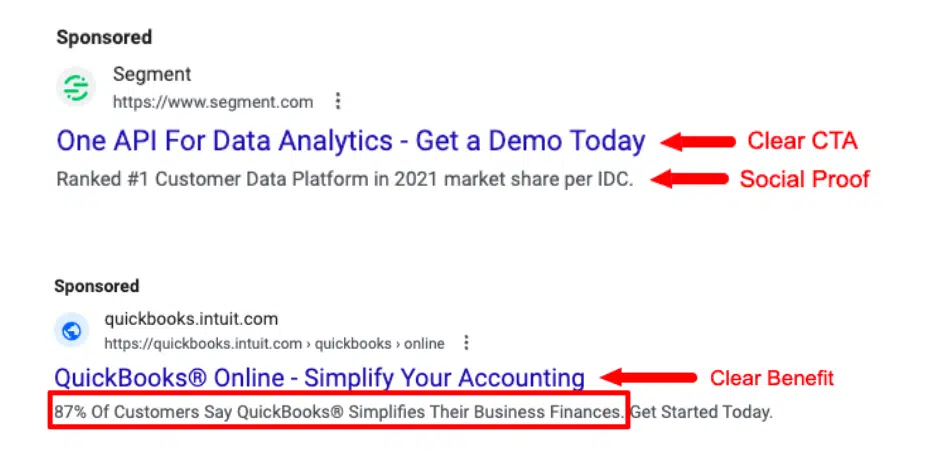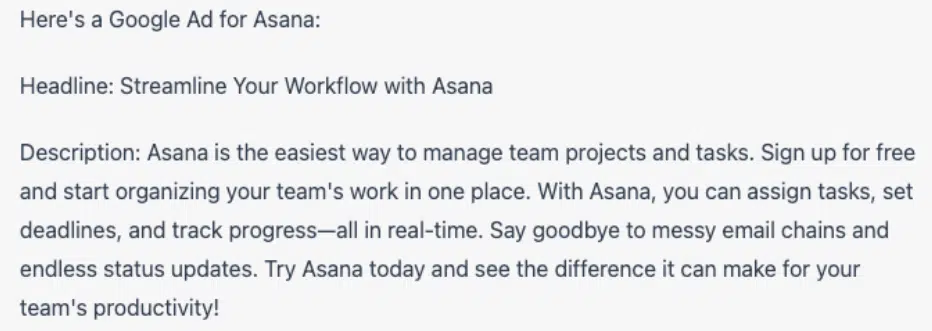How to dial in your ad messaging in an automated marketing world
Automation has leveled much of the PPC playing field. Here's how to differentiate your paid search and social campaigns with great messaging.
Google and Microsoft have forced marketers away from manual controls in favor of automation.
Responsive search ads have replaced expanded text ads. Performance Max is the new way forward for ecommerce. Multi-platform is coming to a Bing account near you.
These days, experienced search marketers have fewer ways to differentiate themselves in performance marketing campaigns. But there’s a major one I’d like to dig into for this column: messaging.
Specifically:
- Messaging’s unique power in today’s search campaigns.
- Successful elements of great messaging.
- The right way to think about testing and refining your messaging.
- Resources for developing effective messaging.
We’ll also look at how – or whether – ChatGPT is changing our approach.
The power of good ad messaging in 2023
Not so long ago, writing ad copy for PPC was somewhat formulaic:
- Do your keyword research.
- Ensure alignment between the ad copy and the destination landing page.
- Come up with a good CTA.
- Squeeze them into character limits.
We don’t live in that world anymore.
Now, you’re putting a cap on your effectiveness if you’re not considering many factors, such as:
- Where the ad will live.
- What might run next to it.
- How it needs to stand apart from competing ads.
The rewards are higher for being creative than when messaging was one of many differentiators.
With much of the playing field being leveled, you need to apply some extra focus on what you’re saying and how you’re saying it.
What goes into great messaging?
The best messaging entices the right people to click and deters those outside your ideal customer profile from engaging. This applies more to B2B than B2C, but it’s true for both.
In other words, great messaging acts as a qualifier. It’s a tricky balance, but it should always be on performance marketers’ minds: spend on the right clicks.
Enterprise companies know all too well what I’m talking about – from clicks to leads, you’re wasting many resources in getting misaligned users in your funnel.
In my experience, the strongest messaging:
- Succinctly highlights benefits (not features).
- Validates its claims with social proof.
- Spells out audience qualifiers.
- Plays on user emotions to heighten the implied risk of ignoring the offer.
We have a lot of SaaS clients, and in competitive, fast-moving tech industries, FOMO is always a good play. Nobody wants to fall behind the pace of business transformation.
Let’s look at a couple of examples of effective ads:

Unless you’re a solo practitioner, you need a good team of people to develop great messaging.
Folks who blend creativity with critical thinking can look at a space and conceive promising ideas to stand out.
Combine that with a knack for brevity and a willingness to ask follow-up questions after the first request from a client or stakeholder, and you’ll have a potential messaging master on your hands.
How to approach messaging tests
I recommend taking one approach for social messaging and another for search messaging.
On Facebook, LinkedIn, TikTok, etc., start by isolating two very different testing themes to see which gets traction, then refine and test within that theme.
Let the data dictate the next steps, but have a bunch of ideas at the ready. There’s a finite number of variables – determine which is most impactful and iterate.
You’re limited to three active RSA versions on Google, so develop three distinct messages and be clear about the elements you’re testing.
If you use a different benefit for each ad, focus your analysis by keeping the social proof relatively similar across ads. (You can also test types of social proof by keeping the benefits static.)
Ensure you’re labeling ads to track what exactly you’re assessing as part of the test.
One note on RSAs: We still have accounts running legacy ETAs outperforming their RSA counterparts.
You can test ETA equivalents vs. RSAs by using pinning mechanisms that Google makes available in the UI for headlines and descriptions.
Google will throw up quality flags to force you to adopt unpinned RSAs, but you may see better performance regardless.
TL;DR: If you suspect unpinned RSAs are hurting account performance, test that workaround and see how they compare.
Resources for developing effective messaging
If you’re new to agency marketing, you’d be surprised what clients have for resources that aren’t public-facing.
Ask for sales materials and any background information from the product marketing team.
You’re almost certain to find stats, pain points, benefits and use cases that you can and should use in your copy.
Start with the landing pages and any downloadable materials, but ask your client contacts to help you access materials from other teams.
If you’re an in-house marketer, set a regular reminder to check in with your teammates (at least quarterly).
See what new insights they’ve produced and whether there’s messaging resonating particularly well with prospects and existing clients.
Is ChatGPT changing anything about messaging development?
I’ll echo an emerging theme with ChatGPT and similar tools. Use AI if it helps you efficiently establish a foundation, then bring in the human layer.
For ad copy and messaging, it could give us a starting point with the right queries by pulling succinct copy from a landing page.
But it won’t provide us with the assets of great messaging I’ve already covered: selling points, stats, etc. It won’t understand user pain points and emotions to play on.
If it reliably saves you time at the start of the process, add it to your SOP – but make sure its usage is confined to the limits of its effectiveness.

Is this usable as is? Nope.
But it gives you a few elements to play with, mainly calling out Asana’s primary benefit in the headline.
Use ChatGPT to get some ideas, but don’t count on it for much more than that at this point.
Level up creativity to make a difference
Even as science and AI get deeper footholds into performance marketing, there’s room left for art to make a difference, especially if you approach it empirically and make sure you’re digging up the right elements to put into play.
Opinions expressed in this article are those of the guest author and not necessarily Search Engine Land. Staff authors are listed here.
Related stories